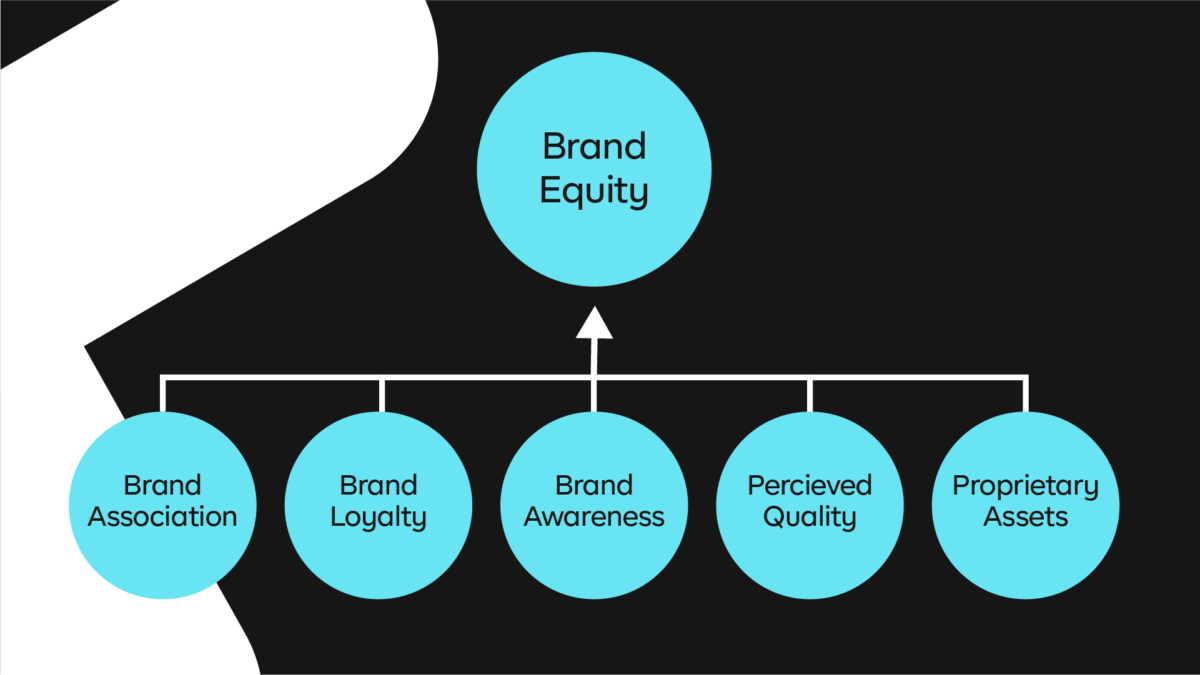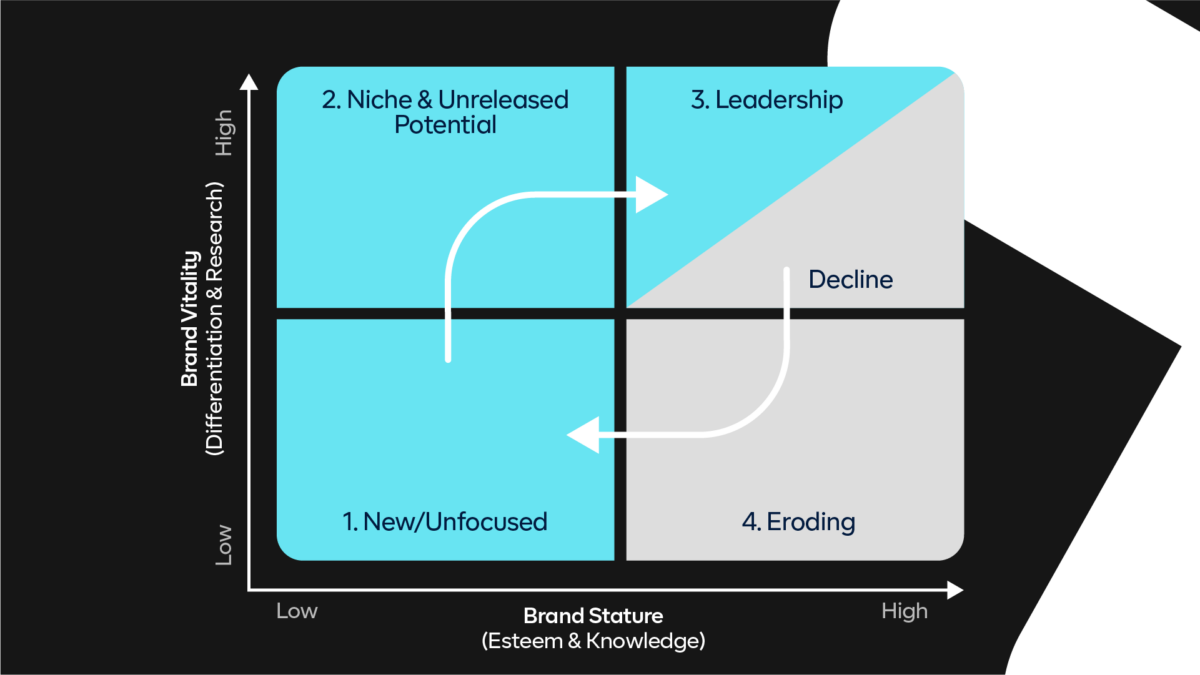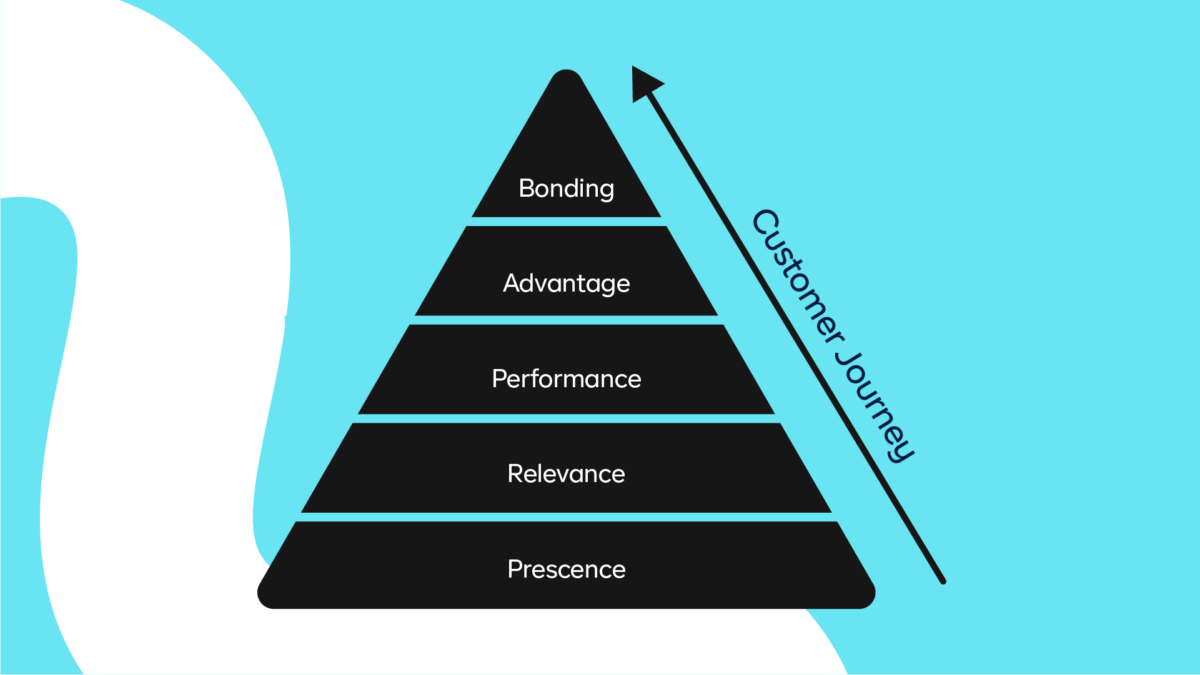Understanding and applying brand equity models
What Is Brand Equity?
Brand equity is what sets one brand apart from another, as well as the power a brand holds in the minds of its customers. Brand equity is why you choose the brand name Panadol over the chemist’s own, or drink Pepsi over Coca-Cola. It’s why if every McDonalds worldwide were destroyed tomorrow, they would still be able to rebuild very quickly because of the value of their brand – everyone recognises those golden arches.
A brand is often more valuable than the product or assets themselves. Managing the brand can be more important than managing the actual products. Brand equity is critical for any business building a robust and reputable brand. It can drive significant value for a business, increase customer loyalty, charge higher prices and position you with a competitive advantage in the marketplace.
In this article, we will explain what brand equity models are, the four main ones, how to use them, and why developing a brand equity strategy is crucial for business success.

Brand Equity Dimensions
Brand equity has four dimensions—brand loyalty, brand awareness, brand associations and perceived quality, each providing value to an organisation in different ways.
- Brand loyalty turns devoted customers into brand advocates, leading to repeat purchases and positive reviews.
- Brand awareness plays a significant role in the customer decision-making journey. Well-known brands have elements that are easy to recall – like their name and logo.
- Brand associations relate to how distinctive your brand is within your product category and the value it offers customers.
- Perceived quality is a perception a customer builds based on numerous experiences with your brand. From design to customer service, each interaction can impact the perceived value of your product or service.
What is a Brand Equity Model?
Brand equity model is a framework that assesses and quantifies the value, perception and strength of a brand in the market. It evaluates various elements such as brand awareness, association, loyalty and perceived quality to measure and enhance a brands recognition and influence the market.
Brand equity models help identify how a company’s value can be created.
Different brand equity models may focus on various aspects of a brand’s value, but they generally share the goal of quantifying and managing the intangible assets associated with a brand.
Types of Brand Equity Models
There are four main types of brand equity models that we’ll cover in this article:
- Aaker’s Brand Equity Model emphasises brand equity as a set of brand assets and liabilities, defining brand equity through brand awareness, perceived quality, brand associations and brand loyalty.
- Keller’s Customer-Based Brand Equity Model focuses on consumer perceptions and attitudes towards a brand, examining brand knowledge, brand image, brand awareness and brand loyalty.
- The Brand Asset Valuator measures a brand’s strength based on brand differentiation, relevance, esteem and knowledge.
- BrandZ, developed by Kantar Millward Brown, assesses brand value through analysis and consumer research.
Aaker’s and Keller’s models are widely recognised for comprehensively assessing brand equity, focusing on dimensions such as brand awareness, associations and loyalty. While the Brand Asset Valuator and BrandZ models are less known, they may offer more tailored insights depending on your industry and organisational goals.
Aaker’s Model
The Aaker model defines brand equity as the collection of assets and liabilities tied to a brand, shaping its value and consumer impact in the market. It was developed by David Aaker, a professor at UCLA, in the early 90’s.
“A brand vision should attempt to go beyond functional benefits to consider organisational values; a higher purpose; brand personality; and emotional, social, and self-expressive benefits.” – David Aaker.
According to Aaker, brand equity is a straightforward concept built on the foundation of recognition. Brands that trigger emotional connections and are easily identifiable are the ones that achieve the most tremendous success — remember the example about McDonald’s and the golden arches?
The Aaker model consists of five key components to manage brand equity and shape the customer’s decision as a consumer:

Brand associations The degree of awareness that a brand holds within its product category (think Coca-Cola in the soft drink category)
Brand loyalty: The level of allegiance a customer shows toward a brand.
Brand awareness: The degree to which a brand is well-received in the market, considering the public’s familiarity with the brand.
Perceived quality: The perception of a product or service and its quality in customers’ eyes.
Proprietary assets: The number of patents, intellectual property rights, trademarks and other proprietary assets owned by a brand (think Nike and the ‘Swoosh’ or Apple and Touch ID)
How to use the Aaker Model
Using the Aaker Model, an organisation can craft a brand strategy that sets its brand apart from competitors. Depending on where you are in your branding and marketing journey, your business might take different pieces away from the model. The key to successfully using the Aaker Model is understanding the five key concepts and how they apply to your organisation.
Brand loyalty
In this component, an organisation would measure the support that a customer has towards their brand. Strong brand loyalty has many benefits in the marketplace, including maintaining customers and reducing marketing costs. An example would be why one customer prefers shopping at a particular supermarket over another. An organisation would tap into these preferences as an advantage over their competitors, who may need help convincing loyal customers to switch brands.
Brand awareness
Establishing good brand awareness involves assessing the degree to which the target audience recognises and recalls a brand. A company demonstrates strong brand awareness when a significant portion of the local population recognises its name and knows its offerings. This recognition not only fosters a positive perception of the brand but also instils a sense of confidence in customers, influencing their decision to choose products or services from that particular company.
Perceived quality
Perceived quality can help companies differentiate themselves from their competitors. For example, a company that sells a higher-priced version of an item may have more perceived quality than one that sells the same item at a lower price. Perceived quality can also apply to attributes like service and reliability. A brand’s perceived quality can lead customers to view the company as consistent, which gives them a reason to purchase its products or services.
Brand associations
Brand associations involve assessing the connections customers have with a brand. These connections encompass information gathered about the company, often through advertising and emotional responses to the brand. A brand with strong brand association can be exemplified by the positive feelings a customer experiences upon hearing the company’s name.
Proprietary assets
In the Aaker model, the last element of brand equity is proprietary assets, denoting a brand’s intangible possessions such as patents, trademarks, copyrights, or intellectual property rights. Cultivating these proprietary assets gives companies a competitive edge, amplifying brand equity.
By following the Aaker Model in some capacity, organisations can clarify branding tasks and discover and understand certain brand elements.
Keller’s Model
The Keller Model asserts that to build a strong brand, you must shape how customers think and feel about your product. Also known as the Customer-Based Brand Equity Model (CBBE model), it was developed by Professor Kevin Lane Keller.
Through this model, Keller illustrates the journey of customers’ relationships with brands – from recognition at the bottom to resonating with the brand at the peak. The four steps of the pyramid represent four fundamental questions that your customers will ask – often subconsciously – about your brand.

Brand identity – This segment reflects people’s general awareness of a brand. It serves as the crucial initial stage in establishing customer brand equity.
Brand meaning – The second tier is divided into performance and imagery. Performance encompasses your products or services’ tangible features and capabilities, while brand imagery delves into the perceptions evoked when individuals encounter your brand.
Brand response – The third tier is divided into judgment and feelings. Both aspects relate to the emotional and evaluative aspects of how individuals perceive a brand, positively or negatively influencing outcomes.
Resonance – At this phase, customers transcend brand awareness and transactional engagement as they evolve into advocates for your brand.
How To Use The Keller Model
Using the Keller Model, there are four steps your business must take to move up the pyramid to achieve resonance status. While the Aaker model uses loyalty to build brand equity, The Keller model focuses more on emotions to achieve this outcome.
Step 1 – Who are you?
When people have not heard or seen a product or service, it isn’t easy to sell, so the first step for a brand is to build a strong identity. Using the Keller model, organisations should:
Create awareness and identity
- Establish awareness for the brand to facilitate product sales.
- Develop a robust brand identity to leave a lasting impression.
- Craft a consistent, clear depiction of the brand’s identity.
Engage with tailored marketing.
- Engage customers through tailored marketing campaigns.
- Use advertisements to raise awareness and make a lasting impact.
Research target audience
- Conduct thorough research on the target audience.
- Understand customer preferences and decision-making processes.
Ensure clarity and consistency.
- Provide a clear, consistent and accurate portrayal of the brand’s identity.
Once you have established this, your awareness efforts must be consistent across all channels you market.
Step 2 – What are you?
As customers familiarise themselves with your brand, the crucial step is communicating its essence, performance and value. Emphasise:
- Reliability,
- Service quality,
- Durability,
- Style and,
- Affordability.
To connect on a social and psychological level, employ diverse marketing strategies, including direct promotion, customer testimonials and social proof to demonstrate how your brand meets customer needs.
If your product aligns with the promises made in brand awareness campaigns, positive experiences follow, propelling customers up the brand equity pyramid. However, failing to meet expectations may result in customer disengagement. This is why authenticity is pivotal for fostering loyalty and long-term relationships in customer-based brand equity.
Step 3 – What do I think about you?
In this stage, a brand response is obtained, which can either be a feeling or a judgment about a product or service.
Positive reactions: Exceptional experiences lead to intense emotional connections.
Satisfied customers become brand advocates, spreading positive word-of-mouth.
Negative reactions: Disappointing experiences result in negative judgments.
Unhappy customers may become brand detractors, expressing criticism on social platforms.
It is imperative for companies to closely monitor customer responses, fostering positive feelings and building a loyal brand following.
According to Keller’s brand equity model, the six positive brand feelings that companies should aspire to include:
- Warmth
- Fun
- Excitement
- Security
- Social approval
- Self-respect
Although a brand may not evoke every listed emotion, it should prioritise eliciting at least one, ensuring that customers experience that particular emotion when they engage with or contemplate the brand.
In the face of negative judgments, responsiveness to complaints is crucial. Efficient marketing materials and periodic brand reassessment can aid this.
Step 4 – What is the association with you?
At this level, unquestionably the most difficult to achieve, customers have formed a deep and unbreakable emotional connection with a brand. In Keller’s model, he breaks this association (resonance) into four categories: behavioural loyalty, attitudinal attachment, sense of community and active engagement.
Ask yourself what you can do to reward customers who are champions of your brand. Examples are incentives like reward points, exclusive experiences and membership cards.
By using the Keller Model, companies can comprehend their brand’s intrinsic value and strengths while pinpointing areas that may benefit from improvement.
Brand Asset Valuator (BAV) Model
The Brand Asset Valuator, or BAV, is a model designed to measure an entity’s value and a brand’s strength. It is not intended to measure the success or failure of branding efforts but to measure essential branding factors while determining your organisation’s strengths and weaknesses. It was designed by Young & Rubicam, an American marketing and advertising agency.
BAV presents key metrics indicating the effectiveness of a business’s marketing efforts, showcasing its market position and perceived value. As a valuable tool, the BAV model enables enterprises to assess brand perception, competitor comparison and opportunities for performance enhancement through insights derived from consumer preferences.
How To use the BAV Model
The BAV model evaluates brands based on four key dimensions:
- Differentiation: The brand’s individuality and exclusivity in comparison to its rivals.
- Relevance: The brand’s alignment with the desires and goals of its intended audience.
- Esteem: The perceived quality and the brand’s reputation encompassing its dependability and the value it offers for the money.
- Knowledge: The degree to which consumers are familiar with and comprehend the brand, its offerings and its core values.
These dimensions fall into two broad categories:
Brand vitality: How much potential does the brand have for growth today and in the future?
Brand stature: The power of a brand and its current value.
To determine where a brand falls into these categories, there are three steps to using the BAV model: collecting data, plotting the results and interpreting the insights.
Step 1: Collecting data
Initiate the brand evaluation process by gathering data on how your target audience views your brand and competitors across the four dimensions of the BAV model. Employ surveys, interviews, focus groups, or other research methods to measure differentiation, relevance, respect, admiration, familiarity and awareness. Pose similar questions about your main competitors to benchmark your brand against them.
Step 2: Plotting the results
In the second step, plot the data results on a graph showcasing the BAV model’s four dimensions. The horizontal axis denotes differentiation and relevance, while the vertical axis signifies esteem and knowledge. Each brand is represented by a point, with point size indicating market share. The graph categorises brands into four quadrants: new, focused, leader and eroded, based on their positioning across these dimensions.
Step 3: Interpreting the insights
The third step is to interpret the insights from the graph and use them to inform your brand strategy. You can see where your brand stands in relation to your competitors and how it can move from one quadrant to another.
- New quadrant: Enhance your standing by communicating your value proposition, fostering trust, and increasing awareness to boost your relevance, esteem and knowledge.
- Focused quadrant: Sustain your distinctiveness and relevance while elevating esteem and knowledge through fortifying your strengths, delivering quality and extending your reach.
- Leader quadrant: Secure your position and steer clear of complacency by innovating, adapting, and engaging with your customers.
- Eroded quadrant: Consider revitalising your brand and reclaiming differentiation through strategic repositioning, rebranding, or relaunching.

The Brand Z Model
The BrandZ model, created by marketing research consultants Millward Brown and WPP, highlights the significance of being meaningfully different as the cornerstone for constructing a potent and valuable brand. This model collects data through interviews and publicly available sources, posing questions to consumers about familiar brands. It is a tool for diagnosing and predicting brand equity.
The model is structured around five sequential steps, each building upon the preceding one and intended to be executed in a specific order. Completing each step is a prerequisite for advancing to the next. The objectives at each step, in ascending order, are as follows:
Presence: Do I know about it?
Relevance: Does it offer me something?
Performance: Can it deliver?
Advantage: Does it offer something better than others?
Bonding: Nothing else beats it.

Consumers at the top of the pyramid, termed bonded consumers, build stronger relationships with the brand and allocate a higher portion of their category expenditures than those at lower levels. Although more consumers are typically found at the lower levels, marketers face the challenge of creating initiatives and programs to facilitate their ascent up the pyramid.
The Importance of Brand Equity Models
Following a brand equity model is important as it ensures focus at every stage of the brand journey, from defining and refining the brand strategy to guiding effective development and guaranteeing accurate implementation of marketing strategies. This article has shown how consumers shape their brand perceptions through diverse experiences, trials, and advertisements by brand owners. However, successful brand building requires more than chance—it demands discipline and a structured framework.
We looked at Aaker’s and Keller’s widely acknowledged frameworks for thoroughly evaluating brand equity, delving into crucial dimensions like brand awareness, associations and loyalty. However, it’s worth noting that alternative models such as the Brand Asset Valuator and BrandZ, though less mainstream, could provide insights tailored to specific industries and organisational objectives. Much like a roadmap for your business, these brand equity models can clarify the path to a stronger and more resonant brand presence.